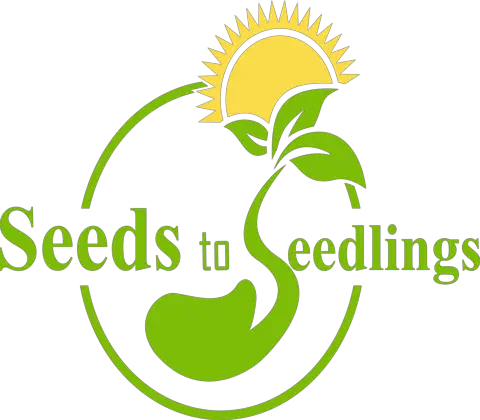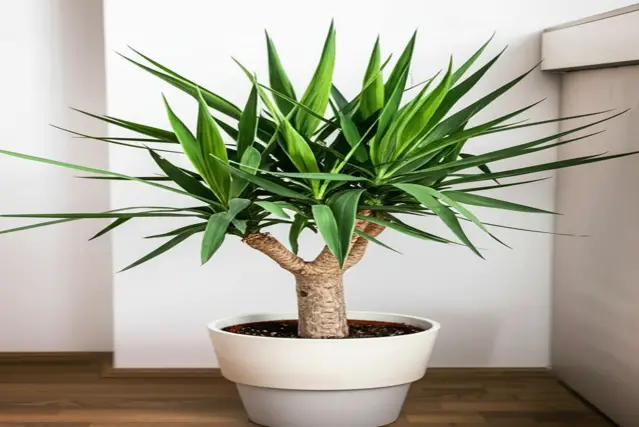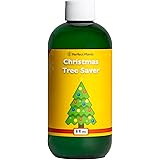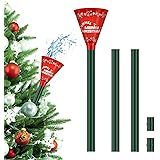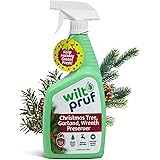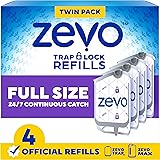Can you successfully care for a Yucca plant in a dim attic? The answer is a nuanced “yes,” with caveats. Yuccas are known for their resilience, but their preference for bright, sunny conditions presents a challenge when placed in a dimly lit attic.
This comprehensive guide will walk you through the essential steps and considerations for providing optimal care for your Yucca in a less-than-ideal environment.
Introduction: The Yucca Challenge
Yuccas are striking, architectural plants that bring a touch of the desert to indoor spaces. Originating from arid regions of North and Central America, they are accustomed to intense sunlight. However, their adaptability allows them to survive, and even thrive, in less-than-perfect conditions.
An attic, often characterized by low light and fluctuating temperatures, may seem like an unlikely home for a Yucca. But with the right strategies, you can create a suitable environment for your plant to flourish. Understanding the specific needs of your Yucca and tailoring your care routine accordingly is key to achieving success.
Understanding Yucca Varieties
Before diving into the specifics of attic care, it’s helpful to know the common types of Yucca plants suitable for indoor cultivation. Some varieties are more tolerant of low light conditions than others.
Common Yucca Varieties for Indoors
- Yucca elephantipes (Spineless Yucca): This is the most popular indoor variety, known for its thick, elephant-foot-like base and relatively good tolerance of lower light.
- Yucca gloriosa (Spanish Dagger): While generally preferring bright light, this variety can adapt to slightly dimmer conditions, especially if supplemented with artificial light.
- Yucca filamentosa (Adam’s Needle): This hardy variety is often grown outdoors but can be brought indoors, though it needs as much light as possible.
Choosing the right variety is the first step in ensuring your Yucca’s success in a dim attic. The Yucca elephantipes is generally the best option for such an environment.
Assessing the Attic Environment
Before bringing your Yucca into the attic, it’s crucial to evaluate the existing conditions. Light levels, temperature fluctuations, and humidity are all important factors to consider.

Light Levels
The most significant challenge in an attic is usually the lack of natural light. Assess how much light reaches the area where you plan to place your Yucca. Is it completely dark, or is there some indirect light filtering through windows? South-facing windows typically provide the most light, but even these may not offer sufficient intensity for a Yucca.
Temperature
Attics can experience extreme temperature swings, becoming very hot in the summer and quite cold in the winter. Yuccas prefer temperatures between 60°F and 80°F (15°C and 27°C). Monitor the temperature in your attic to ensure it stays within this range. If temperatures fluctuate drastically, you may need to implement strategies to regulate them, such as using a space heater or fan.
Humidity
Yuccas are native to arid environments and prefer low to moderate humidity levels. Attics tend to be dry, which is generally favorable for Yuccas. However, excessively dry air can still be detrimental. Aim for humidity levels between 40% and 60%. You can use a hygrometer to measure the humidity and consider using a humidifier if the air is too dry, though this is rarely necessary in an attic setting.
Optimizing Lighting for Your Yucca
Since natural light is often limited in an attic, you’ll likely need to supplement with artificial lighting. This is crucial for preventing etiolation (leggy growth) and ensuring your Yucca receives enough energy to thrive. If you are using grow lights, it’s good to understand if plants can photosynthesize with LED lights.
Choosing the Right Grow Lights
There are several types of grow lights available, each with its own advantages and disadvantages:
- LED Grow Lights: These are energy-efficient, long-lasting, and produce relatively little heat. They are an excellent choice for Yuccas and come in a variety of spectrums to support plant growth.
- Fluorescent Grow Lights: These are more affordable than LEDs but consume more energy and produce more heat. They are suitable for supplementing natural light but may not be sufficient as the sole light source.
- High-Intensity Discharge (HID) Lights: These are powerful lights used for larger plants and commercial growing operations. They are typically not necessary for a single Yucca in an attic setting.
For most attic environments, LED grow lights are the best option due to their energy efficiency and low heat output. You also have to know if can LED light replace sunlight for plants.
Setting Up Grow Lights
Place the grow lights approximately 12 to 24 inches above the Yucca, depending on the light’s intensity. Monitor the plant for any signs of stress, such as leaf burn, which may indicate the light is too close. A timer can automate the lighting schedule, providing consistent light for 12 to 14 hours per day. Since plants do certain things even at night you should be aware about what do plants do at night.
Watering Your Yucca
Yuccas are drought-tolerant plants and are susceptible to overwatering. In a dim attic environment, where transpiration rates are lower, the risk of overwatering is even greater. Careful watering practices are essential to prevent root rot and other moisture-related issues.
Watering Frequency
Water your Yucca sparingly, allowing the soil to dry out completely between waterings. A good rule of thumb is to water only when the top 2 to 3 inches of soil are dry to the touch. In a dim attic, this may mean watering only once every 2 to 4 weeks, or even less frequently during the winter months.
Watering Technique
When you do water, saturate the soil thoroughly, allowing excess water to drain out of the bottom of the pot. Never let the plant sit in standing water, as this can lead to root rot. Use a well-draining potting mix to further reduce the risk of overwatering.
Water Quality
Use room-temperature water to avoid shocking the plant’s roots. Avoid using softened water, as it contains high levels of salt that can be harmful to Yuccas. If your tap water is heavily chlorinated, let it sit out for 24 hours before using it to allow the chlorine to dissipate.
Choosing the Right Soil
The soil plays a crucial role in the health of your Yucca, especially in a dim attic environment. A well-draining potting mix is essential to prevent waterlogging and root rot.
Ideal Soil Composition
A suitable potting mix for Yuccas should be well-draining and slightly acidic to neutral (pH 6.0 to 7.0). A mix of the following ingredients works well:
- Cactus or Succulent Mix: This provides excellent drainage and aeration.
- Coarse Sand: Adding coarse sand improves drainage and prevents the soil from becoming compacted.
- Perlite: Perlite enhances drainage and aeration.
- Potting Soil: A small amount of general-purpose potting soil can be added for nutrients, but avoid using too much, as it can retain excess moisture.
You can purchase pre-made cactus or succulent mix or create your own by combining equal parts of these ingredients. Proper soil is essential in caring for plants in any environment, just like you need to choose best soil for propagating snake plants.
Repotting Your Yucca
Repot your Yucca every 2 to 3 years, or when it becomes root-bound. Choose a pot that is slightly larger than the current one and has drainage holes. Repotting is best done in the spring or early summer, when the plant is actively growing. When you are ready to re pot the plant you should loosen roots before planting.
Fertilizing Your Yucca
Yuccas are not heavy feeders and do not require frequent fertilization. Over-fertilizing can lead to salt buildup in the soil, which can harm the plant. In a dim attic environment, where growth rates are slower, the need for fertilizer is even less frequent.
Fertilizer Type and Frequency
Use a balanced, water-soluble fertilizer diluted to half strength. Fertilize your Yucca only during the growing season (spring and summer), and only once or twice during this period. Avoid fertilizing in the fall and winter when the plant is dormant.
Application Technique
Water the plant thoroughly before applying fertilizer to prevent root burn. Pour the diluted fertilizer solution evenly over the soil, ensuring it reaches all parts of the root system.
Maintaining Optimal Temperature and Humidity
As mentioned earlier, temperature and humidity play a significant role in the health of your Yucca. Maintaining stable conditions in the attic can be challenging but is essential for the plant’s well-being.
Temperature Control
Use a thermometer to monitor the temperature in the attic. In the summer, ensure the attic is adequately ventilated to prevent overheating. A fan can help circulate air and keep the temperature within the desired range. In the winter, use a space heater to prevent temperatures from dropping below 60°F (15°C). Insulating the attic can also help regulate temperature fluctuations.
Humidity Management
Yuccas prefer low to moderate humidity, so you likely won’t need to increase humidity levels in an attic. However, if the air is excessively dry (below 40%), you can use a humidifier or place a tray of water near the plant. Ensure the plant is not sitting directly in the water, as this can lead to root rot.
Pest and Disease Management
While Yuccas are relatively pest-resistant, they can occasionally be affected by common houseplant pests. Regular inspection and prompt treatment are essential to prevent infestations from becoming severe.
Common Pests
- Spider Mites: These tiny pests suck sap from the leaves, causing them to become mottled and discolored.
- Mealybugs: These white, cottony insects cluster in leaf axils and on stems, sucking sap and weakening the plant.
- Scale: These small, armored insects attach themselves to leaves and stems, sucking sap and causing yellowing.
Treatment Methods
- Insecticidal Soap: This is an effective treatment for most common houseplant pests. Spray the plant thoroughly, ensuring you reach all infested areas.
- Neem Oil: This natural insecticide is effective against a wide range of pests and can also help prevent fungal diseases.
- Manual Removal: For small infestations, you can manually remove pests with a cotton swab dipped in rubbing alcohol.
Preventing Diseases
The most common disease affecting Yuccas is root rot, which is caused by overwatering. Ensure your plant is in well-draining soil and avoid overwatering to prevent this issue. If you suspect root rot, remove the plant from the pot, trim away any affected roots, and repot in fresh soil.
It is important to act early to get rid of gnats in indoor plants as well.
Pruning and Shaping Your Yucca
Pruning is essential for maintaining the shape and health of your Yucca. It can also encourage new growth and prevent the plant from becoming too leggy in a low-light environment. Understanding how to prune monstera deliciosa will give you a general idea about pruning.
When to Prune
The best time to prune your Yucca is in the spring or early summer, when the plant is actively growing. Avoid pruning in the fall or winter, as this can stress the plant.
Pruning Techniques
- Removing Dead or Damaged Leaves: Regularly remove any dead, yellowing, or damaged leaves to improve the plant’s appearance and prevent the spread of disease.
- Cutting Back Leggy Growth: If your Yucca becomes leggy due to insufficient light, you can cut back the stems to encourage bushier growth. Cut the stem back to just above a node (the point where a leaf or branch emerges).
- Shaping the Plant: You can prune your Yucca to maintain its desired shape. Remove any branches that are growing in undesirable directions or that are overcrowding the plant.
Propagating Yucca Cuttings
Don’t discard the cuttings! Yuccas are relatively easy to propagate from stem cuttings. Allow the cut end to callous over for a few days, then plant the cutting in well-draining soil. Keep the soil lightly moist until the cutting roots, which can take several weeks. If you are interested to learn more on the subject you can find a lot of information about how to propagate plants from cuttings online.
Troubleshooting Common Problems
Even with the best care, you may encounter some issues when growing a Yucca in a dim attic environment. Here are some common problems and how to address them:
Yellowing Leaves
Yellowing leaves can be a sign of several issues, including overwatering, underwatering, nutrient deficiencies, or pest infestations. Assess your watering habits, soil conditions, and check for pests to determine the cause. If overwatering is the issue, you may want to know how to save overwatered lavender, the methods should give you a starting point. If the leaves are turning yellow on peace lily here is more you can know why leaves turning yellow on peace lily.
Brown Leaf Tips
Brown leaf tips are often caused by dry air, insufficient watering, or fertilizer buildup in the soil. Increase humidity, adjust your watering schedule, and flush the soil with water to remove excess salts. Here is some information on a different kind of plant but might be helpful to understand why you might have Troubleshooting Anthurium Leaves Turning Brown.
Leggy Growth
Leggy growth is a sign of insufficient light. Move the plant to a brighter location or supplement with artificial lighting. Prune back the leggy stems to encourage bushier growth.
Root Rot
Root rot is caused by overwatering and poor drainage. Remove the plant from the pot, trim away any affected roots, and repot in fresh, well-draining soil. Adjust your watering habits to prevent recurrence. You also need to know about cactus root rot so you avoid this situation with your Yucca.
Stunted Growth
Stunted growth can be caused by a variety of factors, including insufficient light, nutrient deficiencies, or root-bound conditions. Assess these factors and make adjustments to your care routine as needed.
Enhancing the Attic Environment for Plant Growth
Beyond the direct care of the Yucca plant, enhancing the overall attic environment can significantly contribute to its well-being. This includes improving ventilation, insulation, and potentially introducing companion plants.
Improving Ventilation
Proper ventilation is essential for preventing the buildup of stagnant air, which can lead to fungal issues and pest infestations. Ensure the attic has adequate airflow by opening windows regularly or installing a ventilation system. A circulating fan can also help to keep the air moving.
Insulation
Insulating the attic can help to stabilize temperatures, making it easier to maintain a consistent environment for your Yucca. Proper insulation can prevent extreme temperature fluctuations, which can stress the plant.
Companion Plants
While Yuccas thrive in drier conditions, introducing certain companion plants can help to balance the environment and create a more diverse ecosystem. Consider plants that tolerate similar conditions, such as succulents or cacti. This can help to improve air quality and create a more visually appealing space. If you are in the process of planing your garden in general, it might be useful to look at what kind of what herbs can be planted together in order to optimize your plants and garden.
Long-Term Care and Maintenance
Caring for a Yucca in a dim attic is an ongoing process that requires consistent attention and adjustments. Regular monitoring and maintenance are essential for ensuring the plant’s long-term health and vitality. By being proactive and responsive to the plant’s needs, you can create a thriving environment, even in a less-than-ideal setting. It is also important to know what does a gardener do in the winter because it’s a bit different.
Regular Check-Ups
Make it a habit to regularly inspect your Yucca for any signs of pests, diseases, or nutrient deficiencies. Early detection is key to addressing issues before they become severe. Check the leaves, stems, and soil for any abnormalities.
Adjusting Care Routines
As the seasons change, you may need to adjust your care routines to accommodate the plant’s changing needs. For example, you may need to reduce watering frequency during the winter months when the plant is dormant. Similarly, you may need to adjust the lighting schedule to compensate for shorter days. Also, keep an eye on your monstera and sunburn, as this situation can be similar for Yucca.
Record Keeping
Keep a record of your care routines, including watering frequency, fertilization schedules, and any issues you encounter. This can help you to identify patterns and make informed decisions about your plant’s care.
Creative Display Ideas for Your Yucca
Even in a dim attic, you can create an attractive display for your Yucca. Consider using decorative pots, plant stands, and other accessories to enhance the plant’s visual appeal.
Choosing the Right Pot
Select a pot that complements the plant’s size and shape. Ensure the pot has drainage holes to prevent waterlogging. Terracotta pots are a good choice, as they allow the soil to breathe and dry out more quickly. If you are using a terrarium, then it is important to know how to prevent mold in terrariums.
Plant Stands and Shelves
Use plant stands or shelves to elevate the Yucca and bring it closer to the light source. This can also help to create a more visually interesting display. Choose stands or shelves that are sturdy and can support the weight of the plant.
Decorative Accessories
Add decorative accessories, such as rocks, pebbles, or moss, to enhance the plant’s visual appeal. These can also help to create a more natural-looking environment. Just like with a terrarium, you need to learn how to clean moss for terrarium.
Expanding Your Indoor Garden
If you successfully care for a Yucca in your dim attic, consider expanding your indoor garden with other low-light-tolerant plants. This can create a more vibrant and diverse indoor environment.

Low-Light Plant Options
- Snake Plants (Sansevieria): These hardy plants are extremely tolerant of low light and drought.
- ZZ Plants (Zamioculcas zamiifolia): These plants are also very low-maintenance and can thrive in almost any environment.
- Pothos (Epipremnum aureum): These trailing plants are easy to care for and can tolerate low light conditions.
- Peace Lilies (Spathiphyllum): These plants produce beautiful white flowers and can tolerate low to moderate light.
It might be helpful to read about how to make pothos fuller if you are planning to grow them in your attic.
Creating a Balanced Environment
When selecting companion plants, consider their light, water, and humidity requirements. Choose plants that thrive in similar conditions to your Yucca to create a balanced and harmonious indoor garden.
The Psychological Benefits of Indoor Plants
Beyond the aesthetic appeal, indoor plants offer numerous psychological benefits. Caring for plants can reduce stress, improve mood, and enhance overall well-being. The presence of plants in your living space can create a more relaxing and inviting atmosphere. This is especially true in limited spaces or when you are gardening in an apartment without a balcony.
Stress Reduction
Studies have shown that caring for plants can reduce stress levels. The act of tending to plants can be a meditative and calming activity. The green color of plants is also known to have a soothing effect on the mind.
Mood Improvement
Indoor plants can improve mood by increasing feelings of well-being and reducing symptoms of depression and anxiety. The presence of plants can create a more positive and uplifting atmosphere.
Enhanced Air Quality
Plants can improve indoor air quality by removing pollutants and increasing oxygen levels. This can lead to improved health and well-being. Plants like snake plants have been recognized as great odor-absorbing indoor plants.
Ethical Considerations for Plant Care
When caring for indoor plants, it’s important to consider ethical aspects such as sustainable sourcing, eco-friendly practices, and responsible waste management. Choosing plants from ethical nurseries, using organic products, and composting plant waste can contribute to a more sustainable and environmentally friendly approach to plant care.
Sustainable Sourcing
Choose plants from nurseries that prioritize sustainable practices, such as using peat-free potting mixes, reducing water consumption, and avoiding the use of harmful pesticides. Support local nurseries that grow their plants sustainably.
Eco-Friendly Practices
Use organic fertilizers and pest control methods whenever possible. Avoid using chemical pesticides, which can harm the environment and pose risks to human health. Practice water conservation by using efficient watering techniques and collecting rainwater for irrigation.
Responsible Waste Management
Compost plant waste, such as dead leaves and pruned stems, instead of throwing it away. This can help to reduce landfill waste and create nutrient-rich compost for your garden. Recycle plastic pots and containers whenever possible.
Adapting Yucca Care for Different Attic Layouts
Attic layouts can vary significantly, and each layout may present unique challenges for plant care. Understanding how to adapt your Yucca care routine to different attic layouts is essential for success. When there are certain limitations with space, it’s good to know how to hang plants in dorm.
Sloped Ceilings
Attics with sloped ceilings may have limited vertical space, making it challenging to position tall plants like Yuccas. Choose smaller Yucca varieties or prune taller plants to fit the available space. Use plant stands or shelves to elevate the plant and bring it closer to the light source.
Limited Window Space
Attics with limited window space may not receive enough natural light to support plant growth. Supplement with artificial lighting to provide the necessary light intensity and duration. Position the plant as close as possible to any available windows to maximize natural light exposure.
Uneven Flooring
Attics with uneven flooring may make it difficult to position plants securely. Use plant stands or saucers to create a stable base for the plant. Level the flooring if necessary to prevent the plant from tipping over.
FAQ: Yucca Care in Dim Attics
Q1: How much light does a Yucca plant need in an attic?
A Yucca plant ideally needs at least 6 hours of bright, indirect light per day. In a dim attic, supplement with grow lights to provide 12-14 hours of artificial light daily.
Q2: How often should I water my Yucca in a low-light attic?
Water sparingly, allowing the soil to dry out completely between waterings. This might be every 2-4 weeks, or even less in winter. Overwatering is a common issue in low-light conditions.
Q3: What kind of soil is best for a Yucca plant in an attic?
Use a well-draining cactus or succulent mix. Add coarse sand and perlite to improve drainage and aeration. Proper soil is crucial to prevent root rot.
Q4: How can I tell if my Yucca is getting enough light in the attic?
Signs of insufficient light include leggy growth, pale leaves, and slow growth. If you notice these symptoms, increase the intensity or duration of your grow lights.
Q5: What temperature range is best for Yucca plants in an attic?
Yuccas prefer temperatures between 60°F and 80°F (15°C and 27°C). Monitor the temperature and use a space heater or fan to regulate it as needed.
Q6: Are Yucca plants toxic to pets?
Yes, Yucca plants are toxic to cats and dogs. Keep them out of reach of pets to prevent ingestion. It is good to know what plants are considered dog safe indoor plants.
Q7: How do I prevent root rot in a Yucca plant in a dim attic?
Ensure the plant is in well-draining soil, avoid overwatering, and provide adequate ventilation. If you suspect root rot, repot the plant in fresh soil after trimming away any affected roots.
Q8: Can I use regular potting soil for my Yucca plant?
No, regular potting soil retains too much moisture and can lead to root rot. Always use a well-draining cactus or succulent mix.
Q9: How often should I fertilize my Yucca plant in the attic?
Fertilize sparingly, only during the growing season (spring and summer). Use a balanced, water-soluble fertilizer diluted to half strength, and only fertilize once or twice during this period.
Q10: My Yucca’s leaves are turning yellow. What should I do?
Yellowing leaves can be caused by overwatering, underwatering, nutrient deficiencies, or pest infestations. Assess these factors and adjust your care routine accordingly.
Conclusion: Cultivating Success with Yuccas in Attics
Caring for a Yucca in a dim attic presents unique challenges, but it is indeed achievable with informed care and strategic adjustments. By understanding the specific needs of your Yucca, optimizing the environment, and maintaining a consistent care routine, you can create a thriving space for your plant. The key lies in supplementing natural light with artificial grow lights, watering sparingly, using well-draining soil, and monitoring temperature and humidity levels. Regular inspection for pests and diseases is also essential for preventing issues before they escalate. The effort put into adapting your care routine will not only help your Yucca survive but thrive, bringing a touch of the desert’s resilience and beauty into your attic space. Furthermore, the psychological benefits of nurturing a plant, such as stress reduction and mood improvement, make the endeavor all the more rewarding. It is important to remember that even though you might think it’s not, you are considered a good gardener.
By considering sustainable and ethical practices, you can ensure that your plant care routine contributes to a more environmentally friendly approach. The combination of careful attention to detail, an understanding of plant physiology, and a proactive approach to problem-solving will pave the way for a successful and flourishing Yucca in your dim attic. This guide should equip you with the knowledge and tools necessary to provide the best possible care, transforming a challenging environment into a sanctuary for your resilient Yucca. Embrace the journey, observe your plant’s responses, and adjust accordingly. Your dedication will undoubtedly be rewarded with a healthy, vibrant Yucca that thrives against the odds.
Auto Amazon Links: No products found.
Perfect Plants Christmas Tree Saver 8oz. | Easy Use Xmas Tree Preserver Food | Have Healthy Green Christmas Trees All Holiday Season
$9.97 (as of December 7, 2025 00:54 GMT +00:00 - More info- Product prices and availability are accurate as of the date/time indicated and are subject to change. Any price and availability information displayed on [relevant Amazon Site(s), as applicable] at the time of purchase will apply to the purchase of this product.
Kaiedos Christmas Tree Watering Funnel - 39 Inch Funnel, Reusable Design, Makes Watering Your Live Tree a Snap!
$14.99 (as of December 7, 2025 00:54 GMT +00:00 - More info- Product prices and availability are accurate as of the date/time indicated and are subject to change. Any price and availability information displayed on [relevant Amazon Site(s), as applicable] at the time of purchase will apply to the purchase of this product.
Forest Fresh Christmas Tree Preservative Tablets – Tree Water Additive for Live Fresh-Cut Trees – Keeps Trees Hydrated and Reduces Needle Drop – Non-Toxic, Made in USA – 1 Packet (8 Tablets)
$5.99 (as of December 7, 2025 00:54 GMT +00:00 - More info- Product prices and availability are accurate as of the date/time indicated and are subject to change. Any price and availability information displayed on [relevant Amazon Site(s), as applicable] at the time of purchase will apply to the purchase of this product.
Wilt-Pruf® Christmas Tree/Cutting Preserver Spray |Preserves Christmas Trees, Wreaths, Garlands, Cuttings and Carved Pumpkins | Reduces Needle Drop | Keeps Cut Trees Fresh Longer | Natural (32 oz)
$21.99 (as of December 7, 2025 00:54 GMT +00:00 - More info- Product prices and availability are accurate as of the date/time indicated and are subject to change. Any price and availability information displayed on [relevant Amazon Site(s), as applicable] at the time of purchase will apply to the purchase of this product.
Christmas Tree Watering Funnel-39 Inch Adjustable 3-Section Long Funnel Spout Funnel Watering System Xmas Plant Watering Tool for Large Indoor Outdoor Plants
$14.59 (as of December 7, 2025 00:54 GMT +00:00 - More info- Product prices and availability are accurate as of the date/time indicated and are subject to change. Any price and availability information displayed on [relevant Amazon Site(s), as applicable] at the time of purchase will apply to the purchase of this product.
Snow Joe Premium Enviro Blend Ice Melt, Green-Coated Deicer Crystals, 50 lb - Safer Melter for Vegetation, Concrete & Metals w/ Anti-Corrosion Calcium Magnesium Acetate
$32.97 (as of December 5, 2025 17:01 GMT +00:00 - More info- Product prices and availability are accurate as of the date/time indicated and are subject to change. Any price and availability information displayed on [relevant Amazon Site(s), as applicable] at the time of purchase will apply to the purchase of this product.
Muddy Mat® Shown on TV Super Absorbent Microfiber Dog Door Mat for Muddy Paws, Non-Slip Washable Pet Rug, Quick Dry Chenille Entryway Carpet, Machine Washable Indoor Outdoor mat, Grey 30"x19"
$19.95 (as of December 5, 2025 17:01 GMT +00:00 - More info- Product prices and availability are accurate as of the date/time indicated and are subject to change. Any price and availability information displayed on [relevant Amazon Site(s), as applicable] at the time of purchase will apply to the purchase of this product.
Cuisinart 6.5" Cast Iron Smashed Burger Press, Round Flat Edge Grill Press for Crispy Smash Burgers, Burger Tool for Grill and Griddle Accessories, for BBQs and Tailgates
$24.99 (as of December 5, 2025 17:01 GMT +00:00 - More info- Product prices and availability are accurate as of the date/time indicated and are subject to change. Any price and availability information displayed on [relevant Amazon Site(s), as applicable] at the time of purchase will apply to the purchase of this product.
Zevo Flying Insect Trap Official Refill Cartridges - Fits Both Zevo Trap & MAX Indoor Fly Trap - Authentic Trap+Lock Technology to Catch Gnats, House & Fruit Flys (4 Official Refill Cartridges)
$13.47 (as of December 5, 2025 17:01 GMT +00:00 - More info- Product prices and availability are accurate as of the date/time indicated and are subject to change. Any price and availability information displayed on [relevant Amazon Site(s), as applicable] at the time of purchase will apply to the purchase of this product.
OLANLY Dog Door Mat for Muddy Paws 30x20, Absorbs Moisture and Dirt, Absorbent Non-Slip Washable Doormat, Quick Dry Chenille Mud Mat for Dogs, Entry Indoor Entryway Carpet for Inside Floor, Grey
$9.99 (as of December 5, 2025 17:01 GMT +00:00 - More info- Product prices and availability are accurate as of the date/time indicated and are subject to change. Any price and availability information displayed on [relevant Amazon Site(s), as applicable] at the time of purchase will apply to the purchase of this product.
